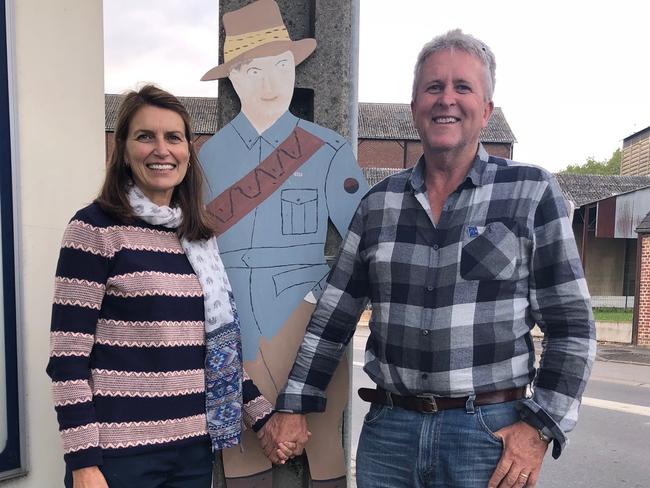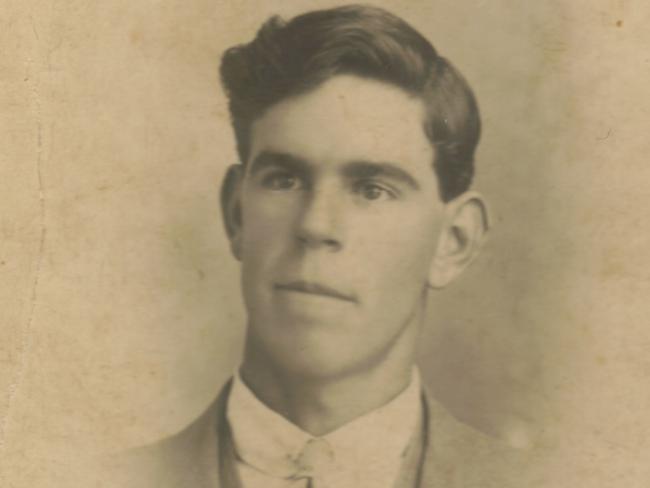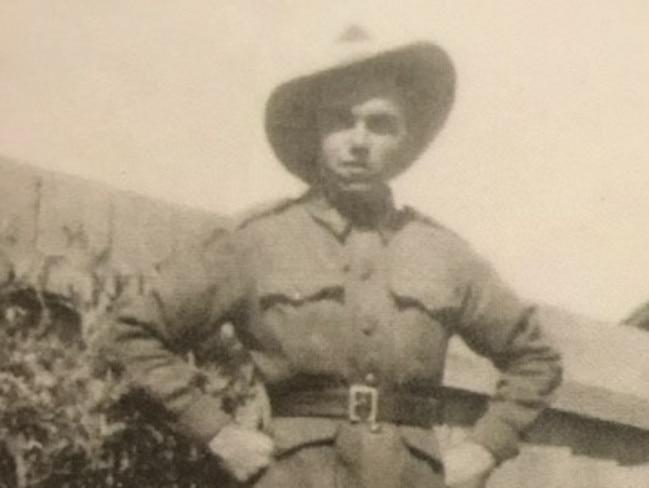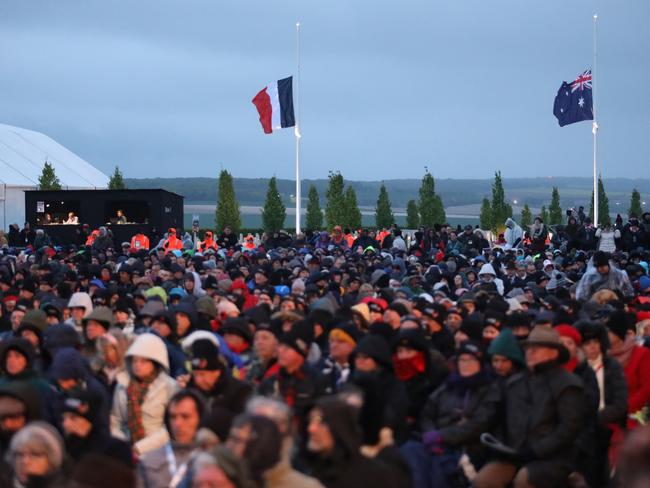Diggers’ families visit Villers-Bretonneux to pay tribute to lost loved ones
THOUSANDS paused to remember and honour our diggers this Anzac Day, but for many, including Gwen Gniel, the day had a deeply personal significance.
National
Don't miss out on the headlines from National. Followed categories will be added to My News.
AS THOUSANDS around her stopped to remember today, Gwen Gniel’s thoughts were with two men, both of the same name — one who survived war, one who did not.
Louis Henri Thurlan died a century ago in a field just a few hundred metres from the site of the Australian National Memorial, where Gwen joined 8000 people in commemoration.
The 20-year-old’s parents had migrated from France to Australia shortly before he was born; and he came back with the AIF to free their country from invasion, fighting the Germans as part of the 57th Battalion for more than a year before he was killed in the first battle for Villers-Bretonneux, on the 5th April 1918 — hurled 150 yards by a shell blast and dying instantaneously, according to witnesses. He was buried in Villers-Bretonneux’s Adelaide Cemetery.
RELATED: When enemies become allies on the frontline
READ: Bill Shorten pays surprise visit to ‘modern Anzacs’
MORE: Prince William’s surprise Anzac Day appearance

“It is ironic and so sad,” said Gwen of her great-uncle. “They left France, yet their son came back and is resting here forever.”
But Louis was not forgotten. His name was given to his nephew, Gwen’s dad — who showed similar pluck when he joined the army as a 16-year-old in World War Two, falsifying his age to get in. Despite wounds and sickness, he survived Kokoda and made it home to start a family — ultimately enabling Gwen and husband Graham, of Seville in Victoria, to make the pilgrimage to France.
“I’ve been thinking of Dad a lot,” she said, welling up. “But there are so many reasons to come, deeply personal ones.”

That feeling was widespread among those gathered yesterday, where so many had deep connections to the conflicts of both World Wars. Even the Australian Memorial itself — opened in the 1930s as a tribute to the 46,000 Aussies killed in WW1, just years later it became a battleground, used as a fortification and observation post by French soldiers as the old enemy invaded once more.

Thousands were in place hours before the official 5:30am start, on grandstands erected between the memorial building and the cemetery, listening to music by the Australian Army band — who had prepared 35 pieces for the event — and choral recitals by Queensland’s Voices of Birralee.
The ceremony was presided over by Prime Minister Malcolm Turnbull and French counterpart Edouard Philippe — who just hours earlier had together opened the adjoining Sir John Monash Centre — along with Prince Charles.

Mr Turnbull, whose wife Lucy was in the official party, referred to the Australians who fought across the Western Front and particularly in the second battle for Villers-Bretonneux, 100 years ago to the day, famously liberating it from the Germans and turning the tide of the war.
“The deeds of these young men have echoed down the years,” he said.
He also demonstrated personal concern for the defence personnel of today when he
came to the aid of a serviceman struggling to raise a stuck flag during reveille.
Monsieur Philippe struck a chord with the 5500 Australians present, who had registered to come almost a year ago. He noted that to their brave ancestors, who travelled across the globe to do their duty in WW1, WWII and after, “distance could not justify indifference”; and the Prince of Wales described a scene from the trenches.
“These men and their loved ones trusted that such sacrifice would be honoured ... let us resolve to continue to fulfil their trust,” he said.

Official wreath-laying was followed by the presentation of more than 200 other wreaths, laid by descendants — Gwen among them.
Planning for the ceremony began two years ago, with nothing left to chance — even supplies. Knowing an army of Australians marches on its stomach, the Department of Veterans Affairs ordered in 10,000 croissants to keep the crowds happy until breakfast.
And its organisers even supplied warm hats and ponchos with the order of service booklets — perfect for the freezing rain that pelted down as daylight came.
As one stoic onlooker noted: “Perfectly atmospheric.”
Originally published as Diggers’ families visit Villers-Bretonneux to pay tribute to lost loved ones


